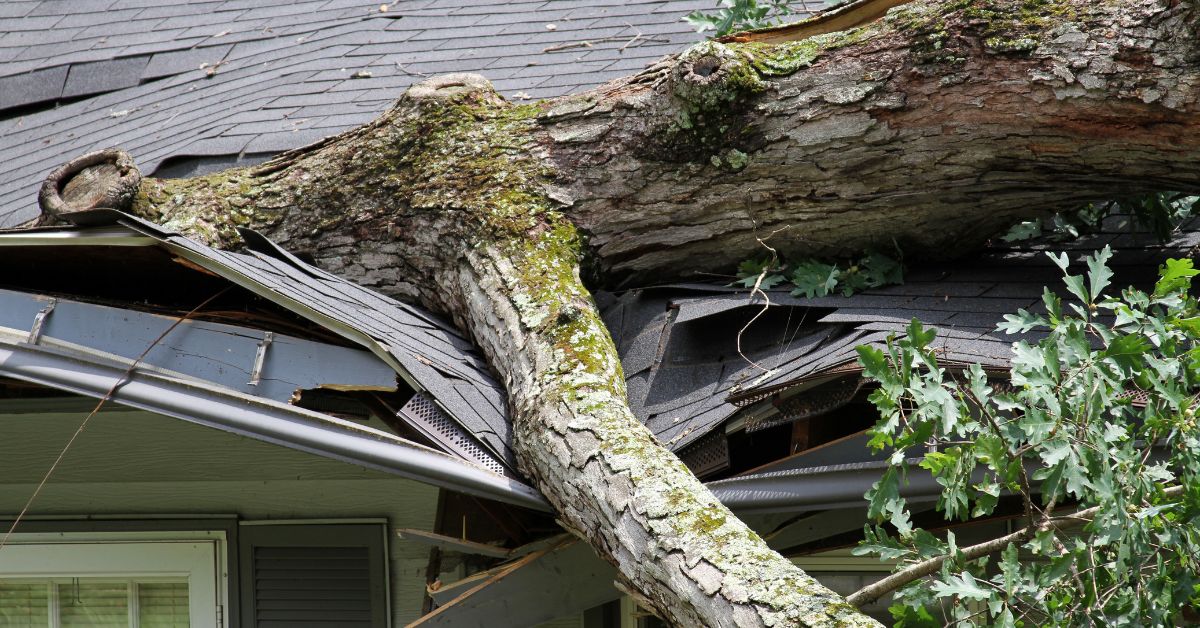
02 Nov What to Check for After a Hurricane
Post-Hurricane Roof Inspection: Essential Steps for Homeowners
After a hurricane, South Florida homeowners must act quickly to assess and address any damage to their roofs. Even if your home seems intact, minor issues can quickly become major problems if left unchecked. Here’s a guide on what to inspect and actions to take to keep your home safe and secure after a hurricane.
1. Start with a Visual Roof Inspection
Begin by looking at your roof from the ground. Avoid climbing onto the roof immediately, as it may have weakened areas or debris that could make it unsafe.
•Shingles: Look for any missing, cracked, or curling shingles, as these can allow water to seep in.
•Granule Loss: Check your gutters and downspouts for excess granules from asphalt shingles. A significant amount of granules indicates severe shingle wear.
•Flashing: Inspect the flashing around chimneys, vents, and skylights to ensure it’s still intact and hasn’t shifted.
•Roof Decking: Look for sagging or dips in the roof, which may indicate structural damage beneath the surface.
2. Check for Leaks Inside Your Home
After a hurricane, go inside and inspect your ceilings, walls, and attic for any signs of leaks or water stains.
•Ceilings and Walls: Look for new or expanding water stains, which may indicate roof leaks.
•Attic: Inspect your attic for any moisture or signs of sunlight shining through. Both can signal roof damage that needs immediate attention.
•Insulation: Check attic insulation for dampness or signs of water, as wet insulation can cause mold and reduce energy efficiency.
3. Clear Debris and Ensure Proper Drainage
Hurricanes often leave branches, leaves, and other debris scattered on roofs. Clear debris from your roof and gutters to prevent blockages and water buildup.
•Gutters and Downspouts: Make sure gutters are clear and flowing away from the foundation. Blocked gutters can cause water to pool on the roof or around your foundation.
•Rooftop Debris: Clear any branches or leaves to prevent them from trapping moisture against the roof, which can lead to rot and algae growth.
4. Inspect Your Home’s Exterior
The exterior of your home can provide clues about roof damage and overall structural issues.
•Fascia and Soffits: Check these areas for any cracks, missing pieces, or signs of water damage.
•Exterior Walls: Look for water stains or signs of leaks along the walls, as these could indicate damage to the roof or flashing.
•Windows and Doors: Inspect seals and frames for damage. Wind-driven rain can infiltrate weak points, leading to moisture buildup inside your home.
5. Contact a Professional Roofing Contractor for a Detailed Inspection
Even if the roof looks intact, it’s wise to schedule a professional inspection. Roofing experts are trained to identify subtle damage that may go unnoticed but could lead to future issues.
•Detailed Assessment: Professionals can assess the structural integrity of the roof, inspect underlayment, and evaluate flashing around openings.
•Insurance Documentation: A licensed roofing contractor can provide detailed documentation if you need to file an insurance claim for storm damage.
6. File an Insurance Claim if Needed
If you discover significant damage, it may be necessary to file an insurance claim. Document all visible damage, take photos, and work with your roofing contractor to ensure accurate information for the claim.
•Document the Damage: Take photos and note specific areas that need repair.
•Consult with Your Contractor: Many roofing companies can help you navigate the claims process and provide necessary paperwork.
Need a Professional Roof Inspection After a Hurricane?
For South Florida residents, Caldwell Roofing offers reliable post-hurricane inspections to assess and address roof damage. Contact us through our Contact page or call 561-475-2379. We’ll help ensure your roof is safe, sturdy, and ready to withstand future storms.

